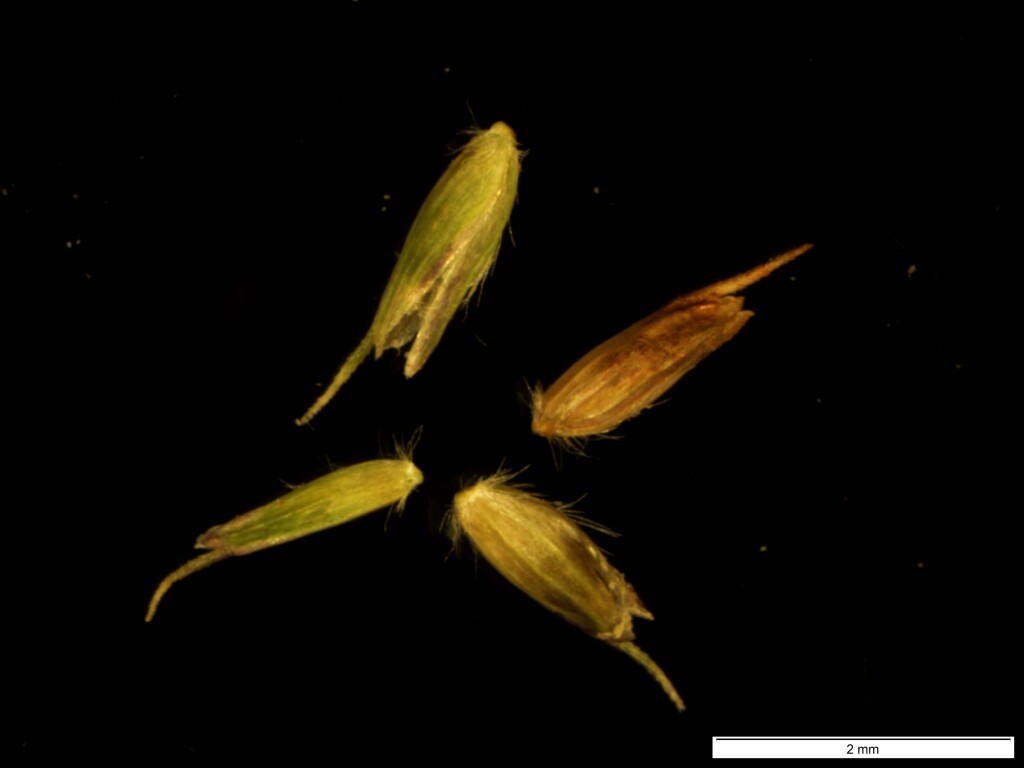Deyeuxia gunniana
(Nees) Benth.Tufted or shortly rhizomatous perennial, culms ascending to erect, 7–40 cm high. Leaves smooth and glabrous; blade folded or closely inrolled, usually flaccid, to 15 cm long and 1 mm diam.; ligule truncate, to c. 1 mm long. Inflorescence an ovoid to pyramidal panicle 2–9 cm long, the branches initially contracted but rigidly spreading at maturity. Spikelets 1.5–1.8 mm long, pale green, rarely purplish; glumes obtuse, truncate or emarginate, sub-equal or the lower slightly shorter, only c. half as long as spikelet, minutely scabrous along the keel near apex; lemma acute, smooth, the 3–5 nerves conspicuously thickened, usually awned from the apex or immediately below it; awn rather thick, straight or slightly recurved, to c. 0.5 mm long, sometimes absent; callus with hairs to c. 0.8 mm long; rachilla bristle c. half to two-thirds as long as lemma, with a few hairs to c. 0.5 mm long. Flowers Jan.–Feb.(–Apr.)
EGU, HNF, MonT, HFE, VAlp. Also Qld, NSW, Tas. Occasional in soaks, gullies and streamsides, often in montaine forest under thickets of Leptospermum grandifolium in higher subalpine areas of the eastern ranges (e.g. Tulach Ard near Gelantipy, Nunniong Plateau, upper Rodger River, Delegate River, Coast Range, Cobberas, Wombargo Range), rare further west at e.g. Mt Speculation, Baw Baws and Lake Mountain.
Very close to D. breviglumis with which it has been united in the past, but differing in the smaller lemmas with a hairy callus, the (usually) finer leaves and the more typically shaded habitats within montane forest.
Walsh, N.G. (1994). Poaceae. In: Walsh, N.G.; Entwisle, T.J., Flora of Victoria Vol. 2, Ferns and Allied Plants, Conifers and Monocotyledons, pp. 356–627. Inkata Press, Melbourne.
 Spinning
Spinning

